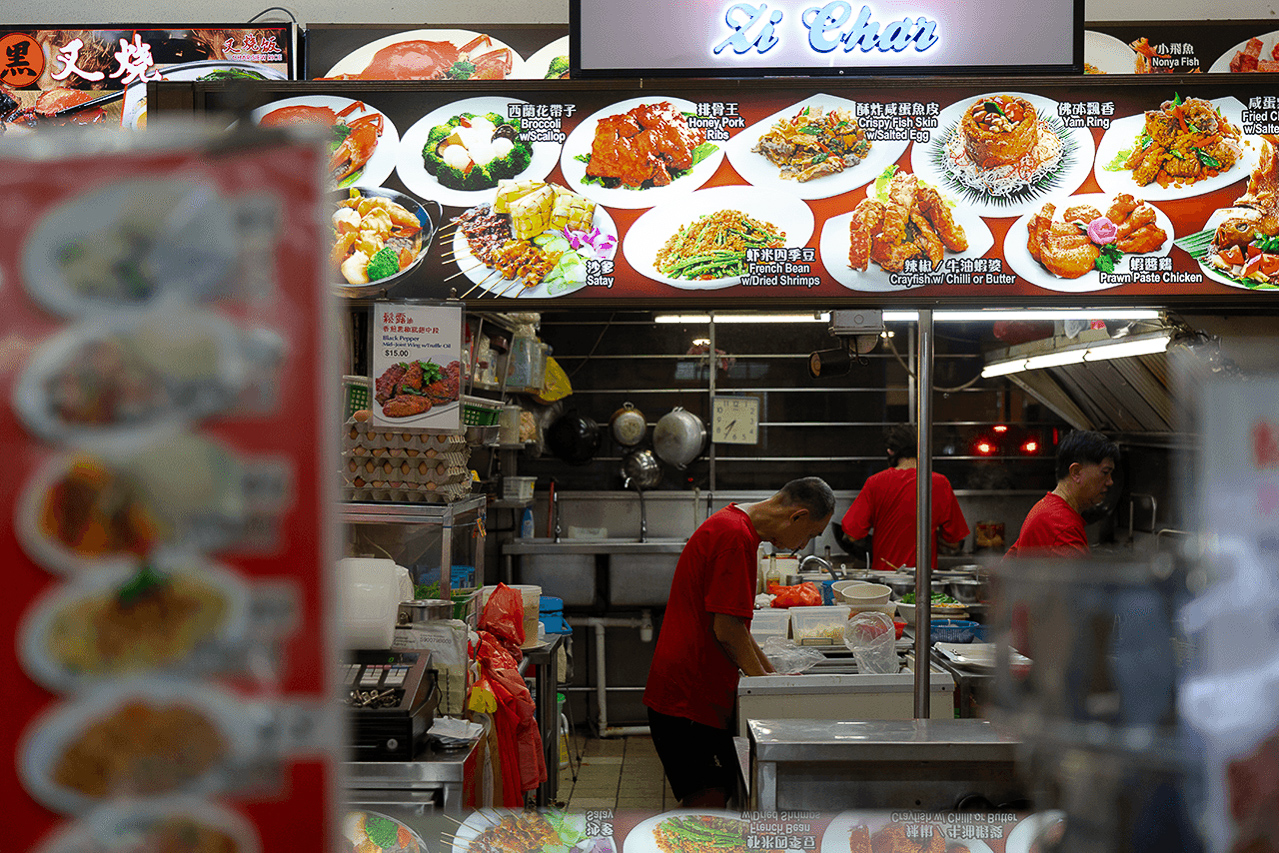Team bonding? Ha. We couldn’t even agree on what to call it.
Boon Ping: How do you spell it? Is it zi char or tze char
Justin: ~tze for the cultured.
Ajay: Ji jar for the non-Chinese.
‘Zi char’ was settled on because Google said so. And because Chinese privilege.


We carefully curated our menu to represent the most popular and typical dishes (actually we just rapidly fired off our favourite dishes to the hapless auntie taking our orders). In the end, our menu looked like this:
Vegetables: 3-egg spinach, sambal kangkong, stir-fried kailan
Egg / tofu: tie ban tofu and furong dan (hotplate tofu and egg foo yong)
Meat: har cheong gai, ko lo yok, pai gu wang, black pepper truffle wings (prawn paste chicken, sweet and sour pork, imperial pork ribs, black pepper truffle wings)
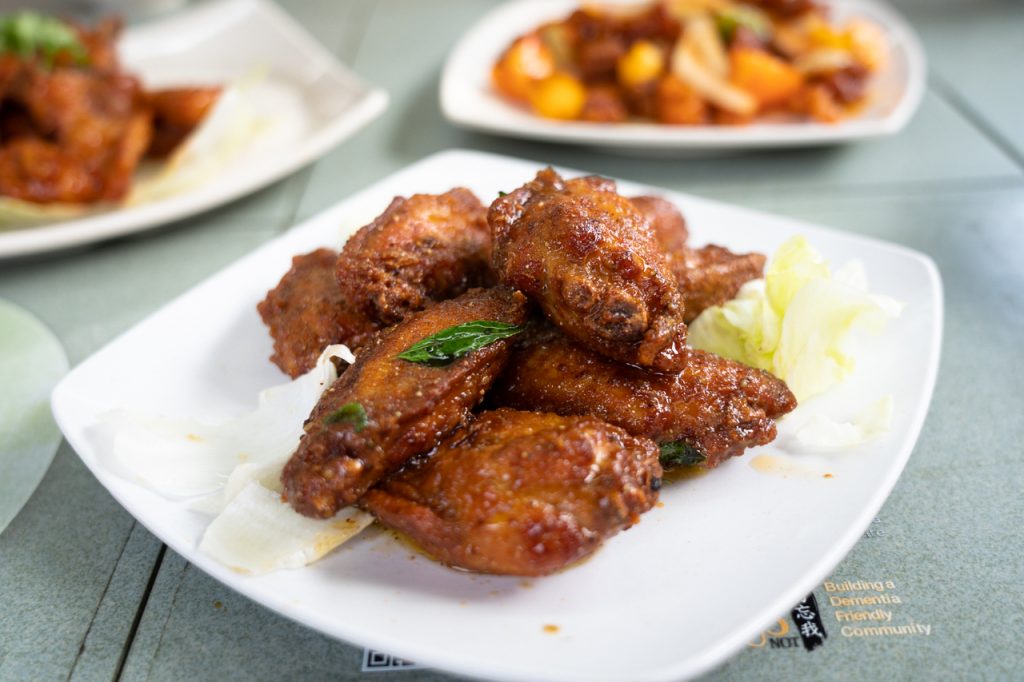
When it arrived, the smell of truffle and black pepper was so intoxicating we started cursing our photographers because they, like vile food Instagrammers, prioritised a good shot over hungry stomachs.
But I digress. Even though the wings made us soar to gastronomic heaven, we decided not to include it in our debate because it’s a dish unique to Yi Le Zi Char.
Also notice that there is no soup. Because it is a universal fact that no one orders soup at zi char. And, as our accounts executive puts it, “Why order soup when you can just order barley bing?”
Now that the boring preamble to our zi char meal has been established, the commentary shall cease; I’ll let the talking do the talking.
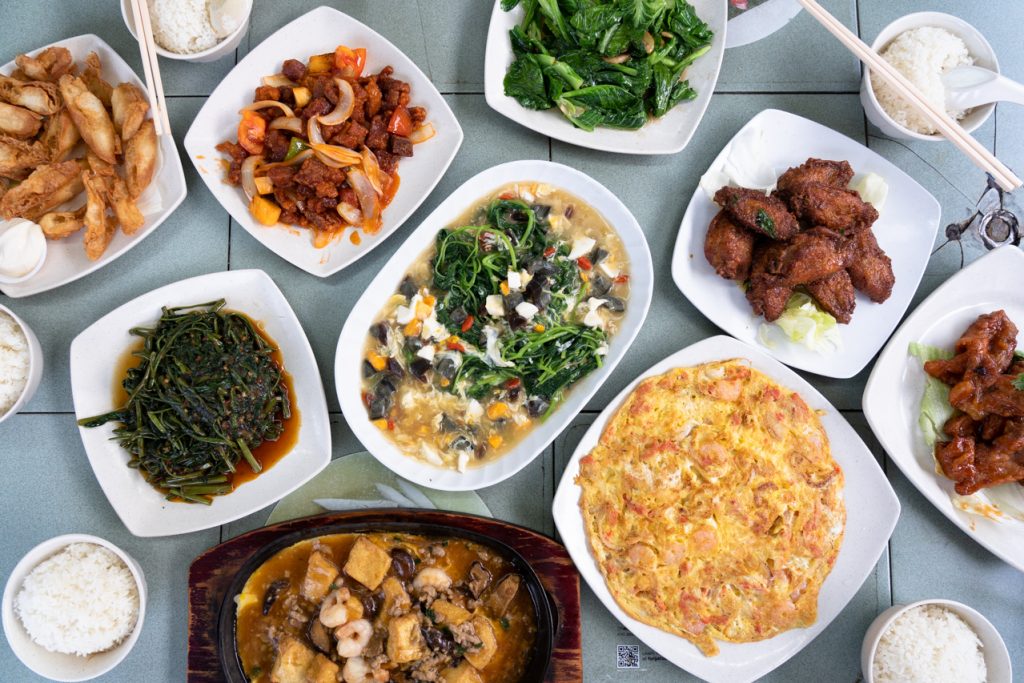
Round 1
Fight between: 3-egg spinach, sambal kangkong, stir-fried kailan
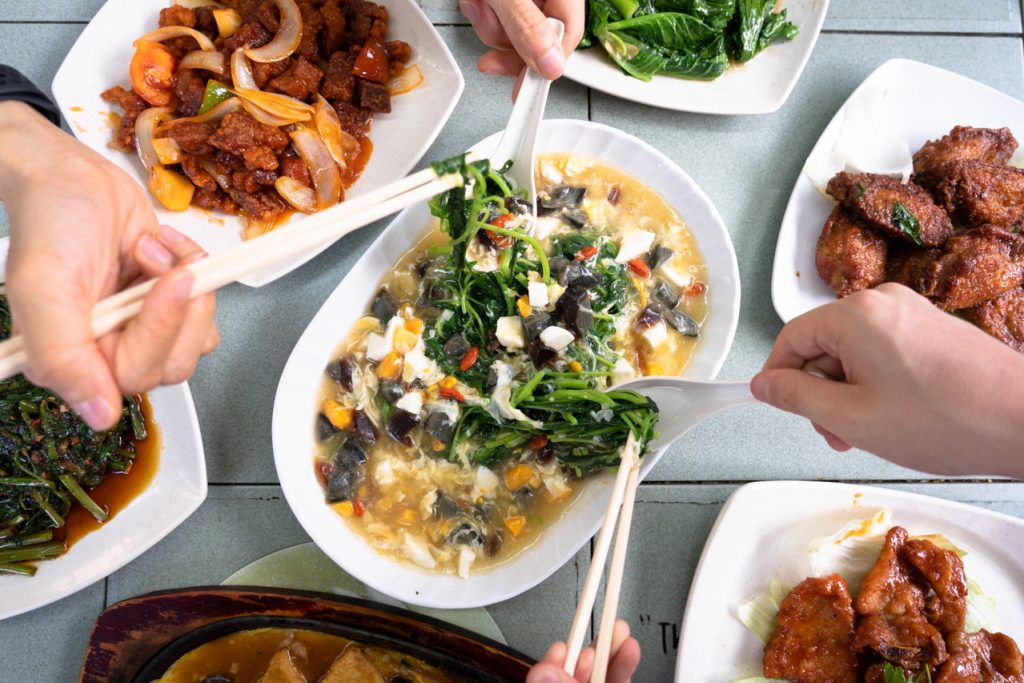
Pan Jie: Maybe you should be comparing the 3-egg spinach with the furong dan then.
Zachary: NO! You need the spinach. The eggs are nice to have but it just complements the spinach. And the spinach got nice gravy that you can eat with the rice. But for all the eggs and liao (ingredients) you have, it isn’t gao (strong). Then got the wolfberry also. So it’s quite light.
Boon Ping: The eggs give a lot of protein. I like it.
Pan Jie: So you like it because it’s not a veggie dish. So your definition is that a good vegetable dish tastes less like a vegetable dish and more like a meat dish.
Boon Ping: I wouldn’t order it if it comes without spinach.
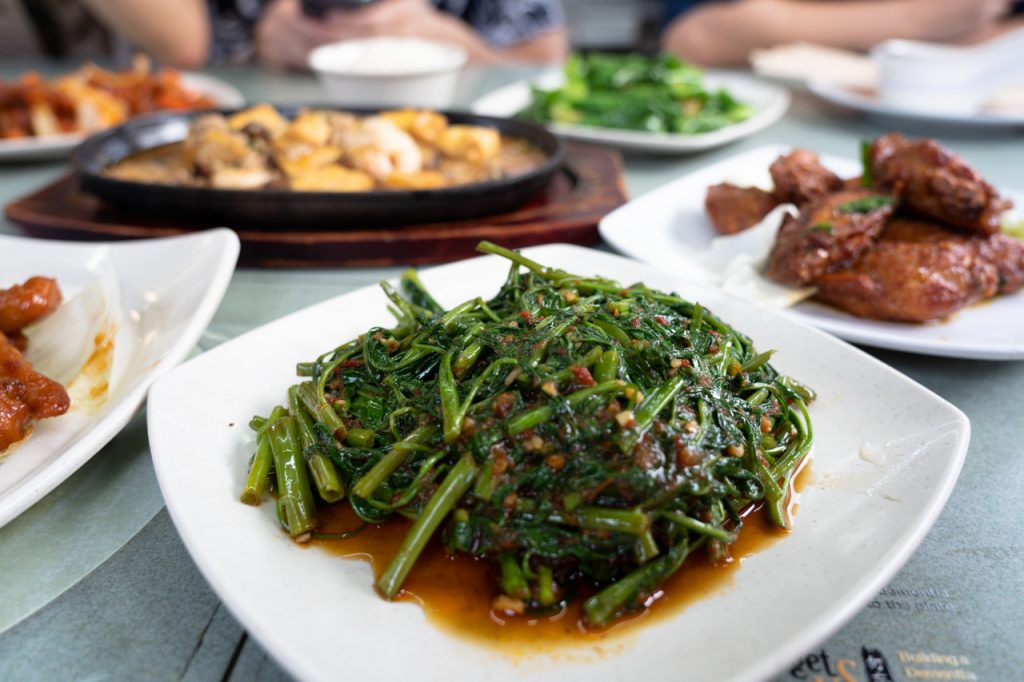
Zachary: Kangkong also not adulterated.
Pan Jie: But you add sambal already like … everything is spiced.
Boon Ping: I always order kangkong. But the kailan is actually nicer than the kangkong. At first I liked the kangkong. But then second bite I felt it was already too much.
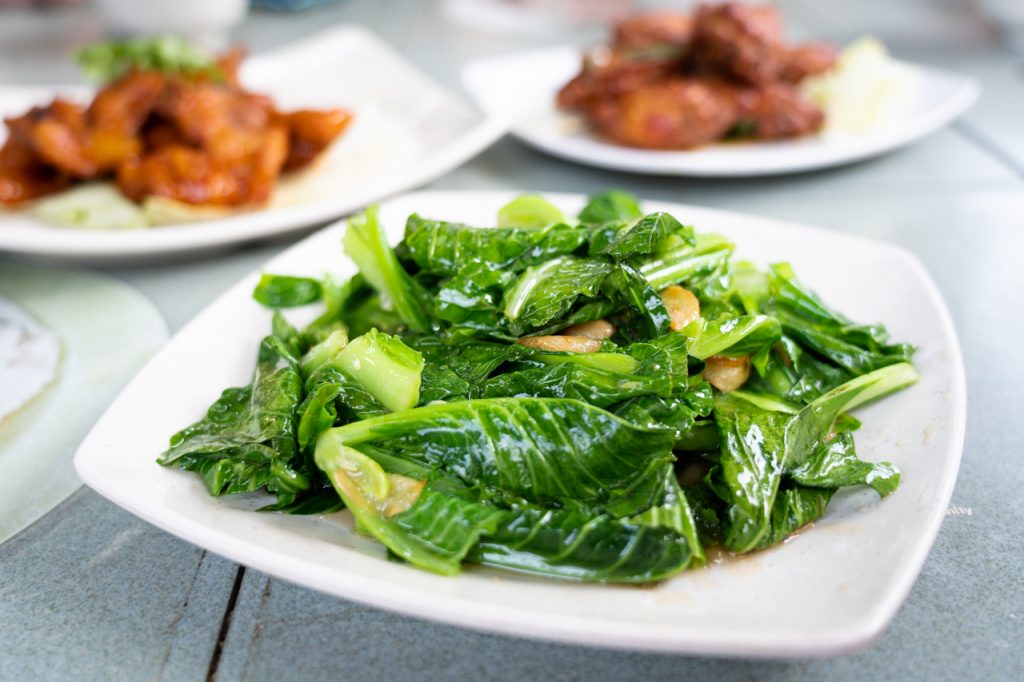
Zachary: I agree with their points. But I still have a personal preference for the 3-egg spinach.
Boon Ping: Same.
Zachary: So it’s kailan vs 3-egg spinach. How?
Boon Ping: The kailan was the first to be finished. I’m quite surprised.
William: See I tell you already. Kailan is the absolute best veggie.
Vegetable verdict: Stir-fried kailan because no one really has strong opinions on vegetables, it’s just a dish you order to fulfil your daily quota of greens, and the kailan was the first to be finished.
Round 2
Fight between: tie ban tofu and furong dan

Pan Jie: Lies.
Boon Ping: Tofu is finishing faster than the egg leh.
Zachary: NO!
William: I prefer the tie ban tofu. The tofu is more interesting. In this case. But normal circumstance, the best version, the furong dan will win. It’s supposed to be a very simple dish.
Boon Ping: So you’re the very pure, unadulterated, ingredients-based-zi-char type of person. But fried egg is a bit boring for zi char. Like it’s literally just fried egg.
William: But it’s also nice cause you can’t cook this kind of egg at home.
Boon Ping: Cannot meh? Can what.
William: A bit hard.
Pan Jie: Very easy.
Boon Ping: If I can’t do it at home then I’ll order it. So for me, definitely tofu.
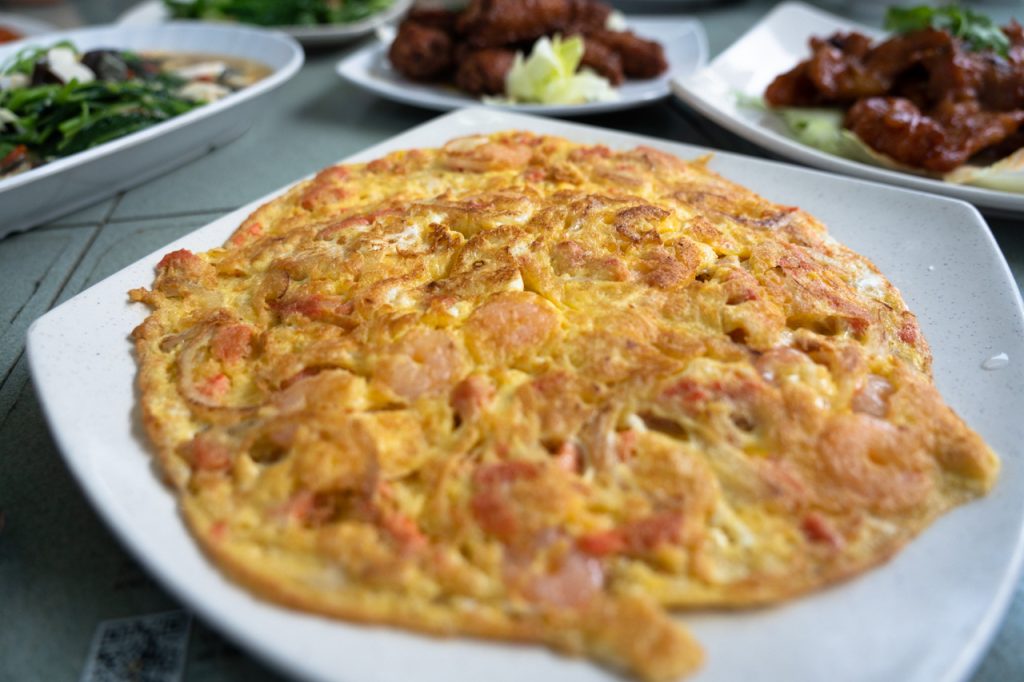
Pan Jie: (aggressively waving his chopsticks in an orthodox way) So you got different standards for different categories huh? This whole experiment is falling apart. So your standard for egg is not your standard for veggies.
William: A good furong dan is just egg and onion and amazing.
Boon Ping: So you want to pay $8 for egg and onion. That’s like the overpriced avocado toast of zi char.
William: I want to pay $8 for a slice of nirvana. Tie ban tofu can’t always give that to me with the trashy prawns.
Pan Jie: I always eat tie ban tofu. I don’t like furong dan. I think I’ve eaten too many bad furong dans. Last time I went to this zi char place … the furong dan is damn bad. So every time I eat furong dan I got the memory of that thing. So that’s also not completely objective.
Zachary: That’s actually a very good point.
Pan Jie: There’s a lot of bad ones. They overcook the shit out of it. Then like—I can cook better at home.
Egg / tofu verdict: Tie ban tofu because PJ thinks he can cook good furong dan at home.
Round 3
Fight between: har cheong gai, ko lo yok, pai gu wang
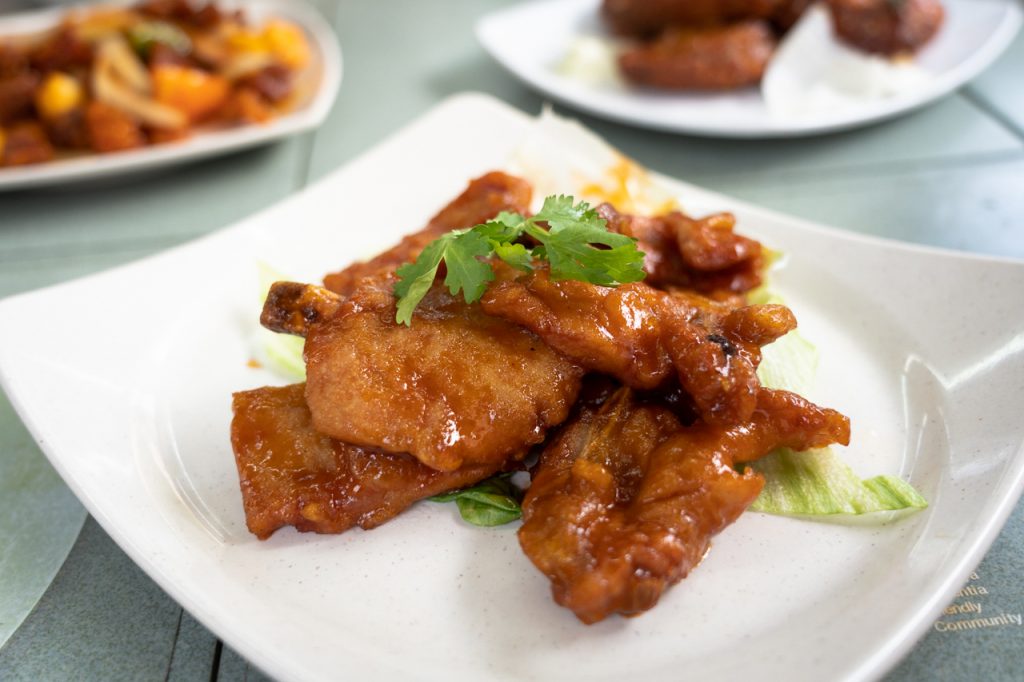
William: Ya there’s no difference. The sauce is the same.
Boon Ping: Very minor changes but the flavour profile is more or less the same. And ko lo yok has peppers and onions and stuff, but that one is just a slab of meat.
William: Wah flavour profile leh. That’s why if people order ko lo yok they won’t order this pork rib. So it becomes a matter of whether you like your meat in cubes or your meat in wholes. It depends on my mood. Sometimes if you want to be barbaric you just want to tear into some ribs. This is the most unpopular dish. Do you all agree?

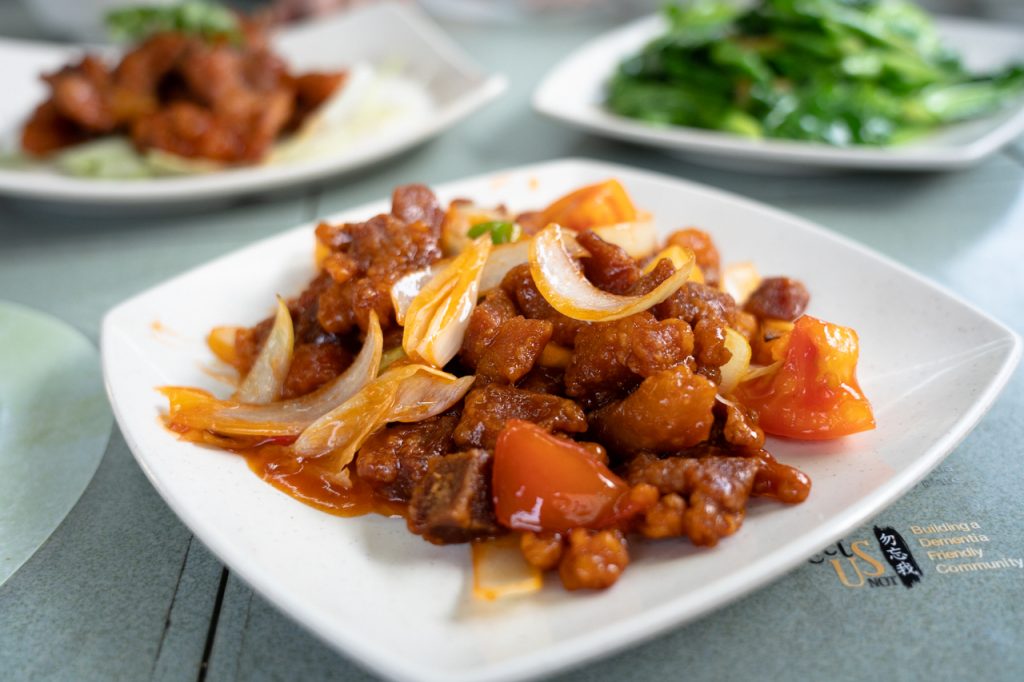
Pan Jie: Because you eat ko lo yok in cai fan also right? You eat it too often so you don’t like it. Whereas har cheong gai is an occasion. ~Insight.~ Correct right?
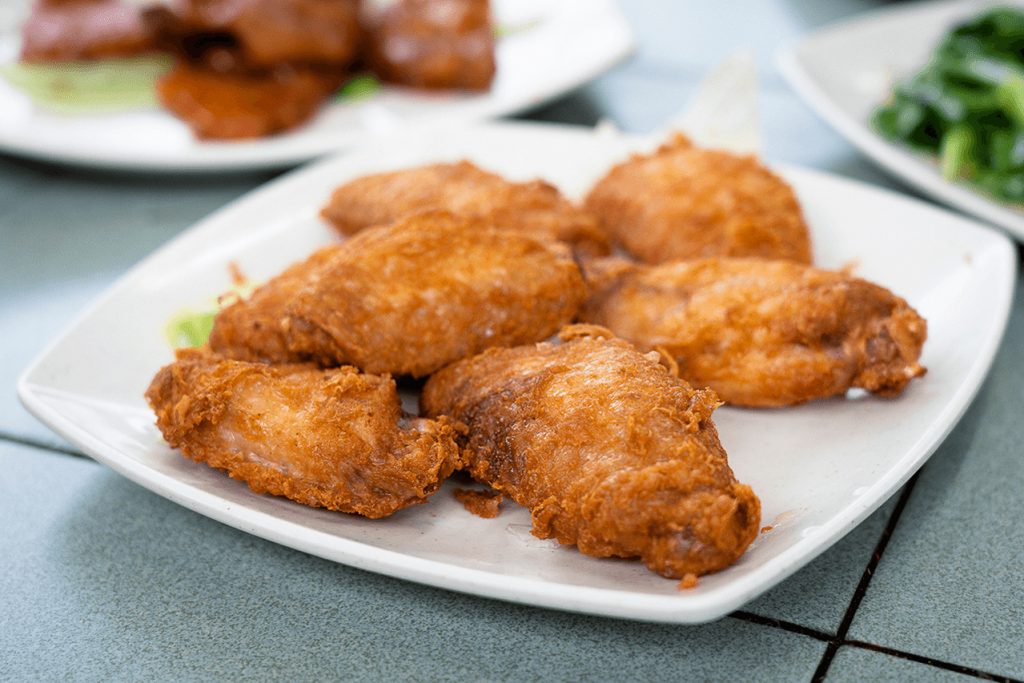
Zachary: Exactly. Most people who like har cheong gai just because it’s fried chicken. They like it with or without the prawn paste flavour.
William: I actually like it because it’s prawn paste. Not because it’s fried chicken. If you gave me a normal piece of fried chicken I would obviously choose the har cheong gai. It’s exciting, it’s bold, when it’s fried nicely it’s not like other fried chicken.
Zachary: Har cheong gai is just one note. It’s the basic bitch of zi char dishes. But ko lo yoke is sweet, sour, crispy, moist.
William: But most places will fuck it up. I just think ko lo yoke is not very spectacular, no matter where you order it, most of the time. It’s just a very ordinary dish, I can live or die without it, it doesn’t matter.
Zachary: Dude ko lo yoke is life, man. Good ko lo yoke is life.
Verdict: ko lo yok because even after two bottles of beer and one ice kosong (yes, that’s a real thing) we never reached a conclusion and I wield executive power for this article.

Zachary: There’s even something comforting about mediocre zi char. You don’t need to have the best when you just want a meal with your family.
Pan Jie: It’s true. You don’t want to go half-way across the country. Stand in a line. Wait around. And I think there are a lot more bad restaurants than bad zi char places. A lot of shit restaurants. But not that many shit zi char restaurants.
William: Which brings me back to my point. Zi char is for the average family in average Singapore. It cuts through all swathes of social background b.s. Anyone can dine at a zi char and feel at ease. Part of the charm is the no-frills aspect.
Boon Ping: For me it’s a family meal where you go downstairs to eat when you don’t want to think about what you want to eat. Because you already know what you are going to order. Stir-fried kailan, tie ban tofu, and ko lo yok.
William: No.
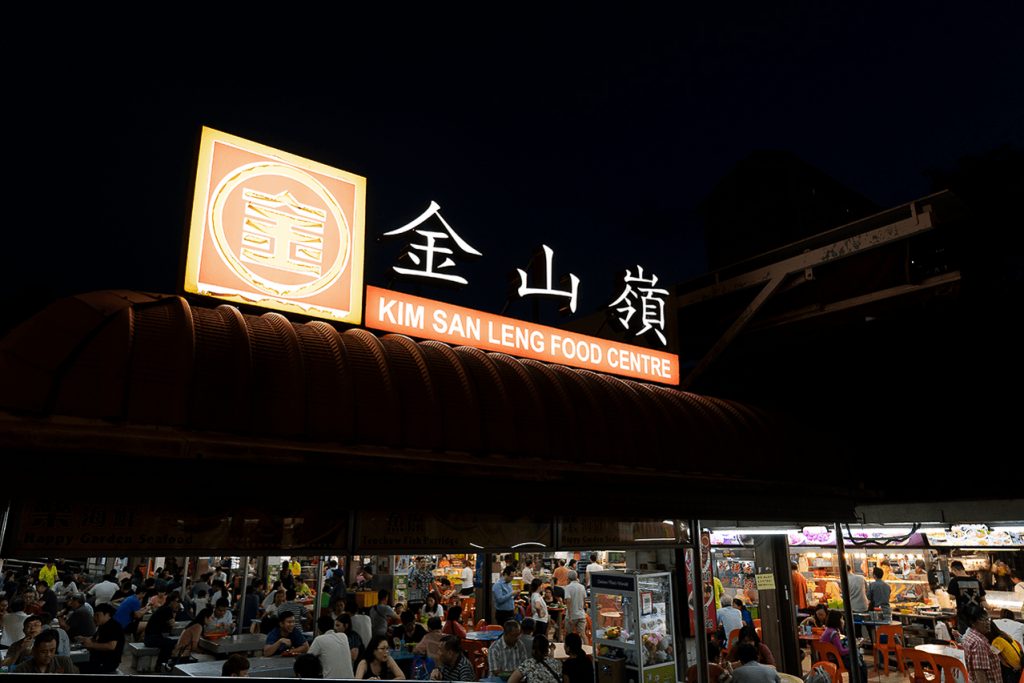
Are you a ko lo yok cultist? Or a har cheong gai devotee? Please send all opinions and angry reactions to community@ricemedia.co

